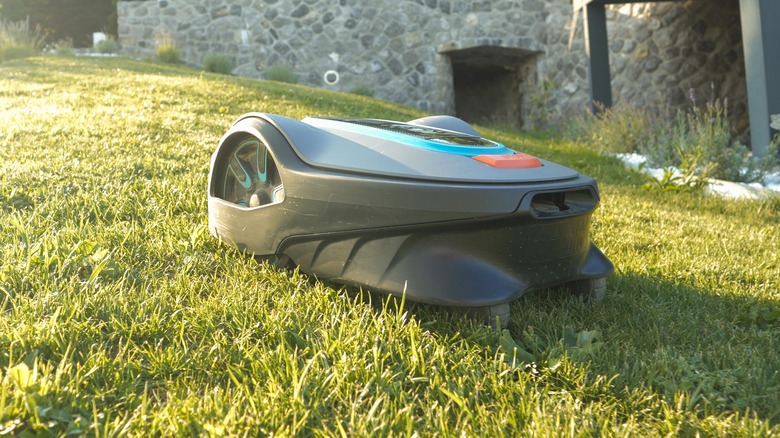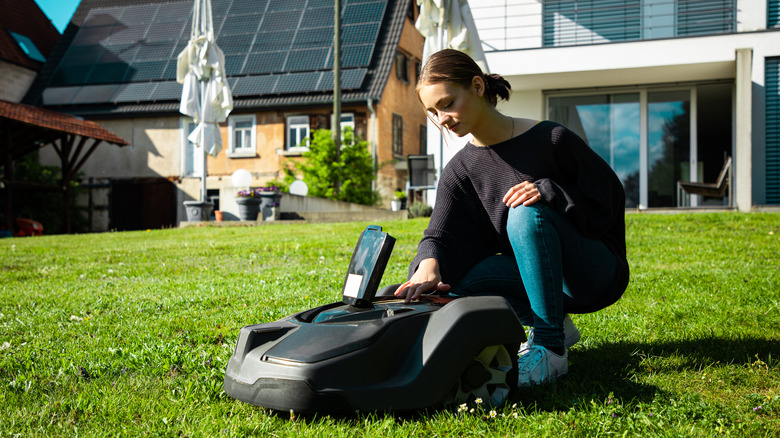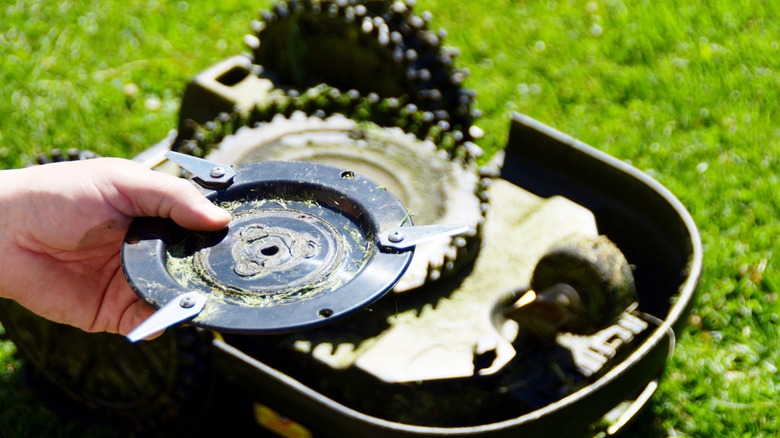Remote Control Lawn Mowers Have Some Downsides To Consider
We are living in an incredible time when there are a number of autonomous robots out there to help us complete our chores. Since the first vacuum-cleaning robot was introduced over 20 years ago, we've also seen robot mops and window cleaners enter the market as well. There's even a potential solution for maintaining your yard, and it's a remote-controlled lawn mower. The reasons to get excited by this innovation are obvious. After all, what could be better than having a robot take care of one of the most laborious, back-breaking chores that's often performed under the hot sun? Instead, you may think that you'll be able to watch your lawn get cut while you enjoy an ice-cold glass of lemonade.
However, robot lawn mowers have some steep disadvantages that shouldn't be overlooked before you determine if this is the right type of mower for your lawn. For one, since they are a relatively new product, these autonomous mowers cost a pretty penny, with some costing several thousand dollars. Further, even though you'll have a robot mowing your lawn, you'll still need to do plenty of upkeep and monitoring. Let's dive deeper into these potential disadvantages to see why a remote control lawn mower may not be the miracle solution you were hoping for.
Get ready to spend some dough
When we say robot mowers can be expensive, we mean it. For context, a standard push lawn mower costs anywhere from $100 to $500, while a robot mower can range from as low as about $800 to several thousand dollars, with some surpassing the cost of many massive rider mowers. On the low end of that number, you'll find what are called wired robot lawn mowers which use a perimeter wire to stay within bounds while mowing, moving only within these limits to cut the grass. On the high end, there are perimeter-less mowers, which use sensors to detect grass and follow that as a guide.
For such a high cost, you might assume these devices work nearly perfectly, but they still have plenty of drawbacks — including those on the high end. Wirecutter's top pick for a boundary-less robot mower, for instance, is the Husqvarna Automower 450XH EPOS, which costs nearly $6,000. Even at this price, it still needs to be monitored pretty steadily, as it doesn't detect small objects in the grass well. Additionally, if you have poor cell service, the mower may need you to stay nearby to control it via Bluetooth when the Cloud isn't operable — suddenly, remote-controlled doesn't seem to be all that remote. With all of these issues, it's hard to say if a robot lawn mower is really worth it.
Hands free doesn't mean hands off
As mentioned above, most of these mowers, regardless of whether they're wired or perimeter-less, still need lots of attention to function properly. Whether your lawn is cluttered with kids toys or furniture, these items can make for a tricky obstacle course. At best, these items can cause your robot to waste time (and battery power) navigating around the obstacles. At worst, the remote control lawn mower may even cause damage to your possessions and the robot itself. So if you have that image of kicking back and turning the mower on from a lawn chair, you may be sadly surprised to realize how much attention you have to pay to a robot mower.
And just because these mowers can be programmed to go out in the yard and return on a timer doesn't mean you don't need to check them regularly. In fact, you may even need to be more deliberate about giving the mower a once-over after every use. This is because, with a standard push mower, you're often able to tell if something is wrong, like if your mower sounds tired when you start it. In comparison, with the robot lawn mower, small issues can go unnoticed and become bigger ones if you aren't frequently doing check-ups. Additionally, because the mower mulches the grass clippings instead of picking them up, that dense mat of debris means that you may need to aerate your lawn more frequently — a labor-intensive task.


